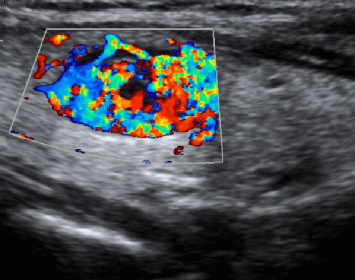Decoding Thyroid Cancer Ultrasound Colors: What Patients Need to Know

Thyroid cancer is a common type of cancer that affects the thyroid gland, which is responsible for producing hormones that regulate various body functions. One of the most effective ways to detect and diagnose this disease is through an ultrasound scan. However, understanding the colors on an ultrasound report can be overwhelming, especially for those who are not familiar with medical jargon. In this blog post, we will decode thyroid cancer ultrasound colors and explain what they mean for patients. Whether you’re a newly-diagnosed patient or someone interested in learning more about thyroid cancer detection, keep reading to learn everything you need to know!
What is Thyroid Cancer?
Thyroid cancer is a type of cancer that starts in the thyroid gland. This small butterfly-shaped gland is located at the base of your neck and produces hormones that regulate your body’s metabolism. Thyroid cancer can occur when cells in the thyroid grow uncontrollably, forming a mass or tumor.
There are several types of thyroid cancer, including papillary thyroid carcinoma and follicular thyroid carcinoma, which account for about 90% of all cases. These types tend to grow slowly and have a good prognosis if detected early. Other less common types include medullary thyroid carcinoma and anaplastic thyroid carcinoma, which are more aggressive and may require more extensive treatment.
The exact cause of most cases of thyroid cancer is unknown, but factors such as exposure to radiation, genetic mutations, family history, age and gender may increase one’s risk. Symptoms may be absent or mild at first but can include swelling or lumps on the neck area, difficulty swallowing or breathing.
If you suspect you might have symptoms related to this disease it’s important to talk with your doctor so they can help diagnose properly what could be causing them.
Ultrasound Colors and What They Mean
When getting an ultrasound for thyroid cancer, the colors on the screen can be confusing and overwhelming. But understanding what those colors mean can help patients receive a proper diagnosis and treatment plan.
Ultrasound colors are used to indicate blood flow in the affected area. The most common colors seen on a thyroid ultrasound are red, blue, green, and yellow.
Red indicates high blood flow or vascularity in the area. This could be a sign of cancerous cells as they tend to have increased blood supply compared to healthy tissue.
Blue indicates low blood flow or no vascularity in the area. This is usually indicative of benign nodules or cysts that do not require immediate attention.
Green is used when there is moderate blood flow present in the area. It may suggest inflammation or early stages of cancer but further testing is often necessary.
Yellow indicates variable blood flow within an area, meaning it could potentially be either benign or malignant. Further testing such as fine-needle aspiration biopsy may be needed to determine if it’s cancerous.
Understanding these color codes can aid doctors in making accurate diagnoses and creating individualized treatment plans for each patient with thyroid cancer.
What Do the Colors on an Ultrasound Mean for Thyroid Cancer Patients?
Understanding the colors on an ultrasound is crucial for thyroid cancer patients to determine their diagnosis and treatment plan. The different shades of gray, white, and black indicate various characteristics of the thyroid nodule.
A solid hypoechoic nodule appears dark on an ultrasound due to its high density. This type of nodule may be indicative of cancer and require further testing. Conversely, a cystic or fluid-filled nodule appears as a bright spot on an ultrasound due to its low density. These nodules are typically benign but should still be monitored regularly.
In addition to color, the shape and size of the nodule also play a significant role in determining whether it is cancerous or not. A lobed or irregularly shaped nodule may increase suspicion for malignancy, while smaller nodules are less likely to be malignant.
It’s important for patients with suspicious nodules to seek medical attention promptly and undergo further testing such as biopsies or bloodwork. Understanding the colors on an ultrasound can give patients insight into their condition and help them make informed decisions about their health care journey.
Conclusion
Understanding the different colors on a thyroid cancer ultrasound can be daunting for patients. However, it is important to remember that each color represents vital information that will help diagnose and treat the condition.
Thyroid cancer is one of the most common types of cancer worldwide, and early detection through ultrasounds is crucial in improving treatment outcomes. By decoding the meaning behind each color on an ultrasound, patients can better understand their diagnosis and communicate with their healthcare providers about potential treatment options.
While interpreting an ultrasound may seem complicated at first, patients should trust their medical team to guide them through every step of the process. With proper care and attention, those diagnosed with thyroid cancer have a high chance of successful recovery.
Remember, your health always comes first – so don’t hesitate to ask questions or seek additional support throughout your journey towards healing.




